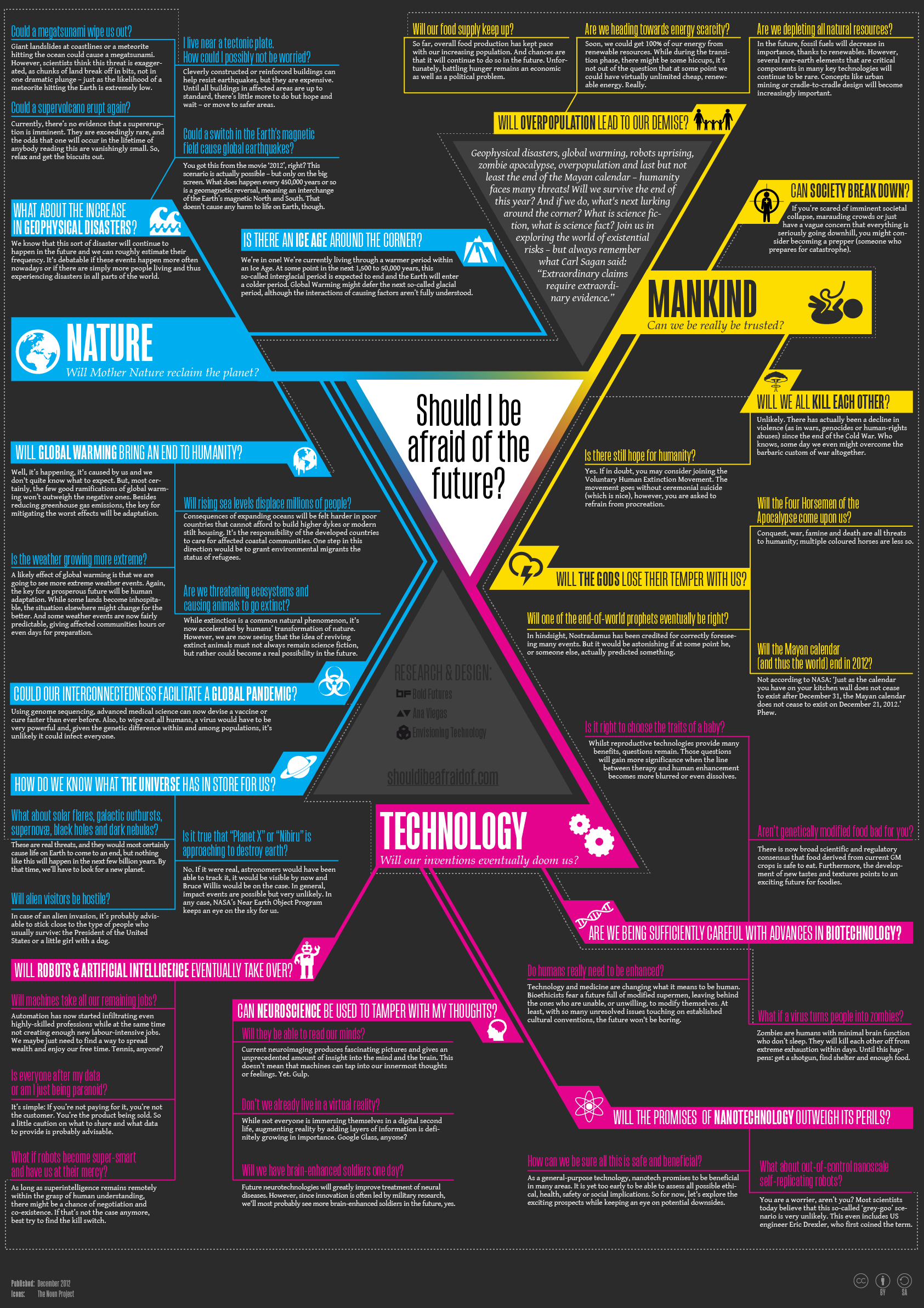Human Beings: Children of the Stellar Medium
I have heard people use the cliche, "no money, no honey." Well, I am here to say no Earth, no business activities.
Life on Earth can best be described as tenuous yet resilient. Many have pondered when will the ultimate "time's up" moment arrive for humanity. Will the demise of humans arrive 10 years from now? 100 years? 100,000 years? 1,000,000 years? 1,000,000,000 years? 1,000,000,000,000 years? Nobody knows.
There exists no shortage of doomsday scenarios to surmise how life on Earth eventually will end. Human-on-human violence (such as the extreme case of nuclear annihilation) is but one human-extinction scenario. The next image takes into consideration some of these other doomsday or human-extinction scenarios. The point is this: Earth is the only known habitable home where humans can survive and thrive in large numbers. As time passes, it becomes critical for humans to handle Earth with care. As yet, there exists no other place in the Universe that is conducive to human life like planet Earth. The next image depicts some of the potential perils that could lead to the demise of the human species.

The next image depicts spacetime and the history of life on Earth purely from a scientific perspective. Granted, the world's religious leaders and followers vehemently do not ascribe to the scientific perspective chronicled by the next image.

The next three images immediately below represent prevailing scientific thinking about how the Universe is modeled. The images survey the course of time from the past, the present, and the future. Other more esoteric scientific models exist to explain current reality such as string theory and multi-verses. Inherit in the prevailing scientific thinking is the notion of spacetime. Much like Albert Einstein demonstrated that matter and energy are interchangeable as outlined in his famous E=mc2 equation, he also demonstrated that space and time are interwoven. Humans generally view reality as comprising three dimensions—width, height, and depth. Albert Einstein demonstrated that time represents a fourth dimension. Albert Einstein stated that time should be treated as a co-equal component of reality. In so doing, Albert Einstein drew a nexus between time and space. Albert Einstein's new interpretation of visible, physical reality came to be known as spacetime.



The next three videos briefly summarize the essence of spacetime from a scientific perspective.
Watch (Space Time Vortex - Theory of Gravity - Science at NASA)
Watch (Gravity in Newton's Universe)
Watch (Gravity in Einstein's Universe)
With respect to spacetime, as illustrated by the two videos immediately above, Sir Isaac Newton viewed gravity as a force between two masses. If something occurred to disrupt or sever the force, then the gravitational attraction between those two masses instantly would cease to exist. For example, if the Sun suddenly disappeared, according to Sir Isaac Newton, then in a split second Earth instantly would go dark, cold, and drift off into deep space. Einstein, on the other hand, viewed gravity as curved spacetime. According to Einstein, if the Sun suddenly disappeared, then Earth would not instantly go dark and cold. Rather it would take 8 minutes before the Earth went dark because 8 minutes is the amount of time through curved space it would take light from the Sun to stop reaching Earth. It would take 8 minutes before Earth began to drift into space. Of course, in this particular illustration, Newton's view of gravity versus Einstein's view reduces to a distinction without a difference given the meager 8-minute difference or delay before humanity went extinct, that is, if the Sun, one day, should suddenly disappear. If you were told you only had 1 more second to live versus 8 more minutes to live, you probably would ask, "What difference does it make?"
Watch [Vangelis, Rosetta - Album Trailer (Extended)]
Watch [Vangelis, Rosetta Timeline (Rosetta)]
Given the enormity of the Universe, the larger and more intriguing questions become these: Is Earth the only Heaven body in the Universe to harbor life? Are humans the only self-proclaimed intelligent life form to exist throughout the entire Universe? Intelligence, in this context, connotes a capacity to foster an elaborate and sophisticated artificial world within the confines of the natural world (such as the ability of a species to leave the home planet, travel through deep space, and inhabit other worlds or heavenly bodies).
Do those elusive space aliens exist? Given the age, enormity, and vastness of the Universe, it becomes harder and harder to imagine that life does not exist elsewhere in the Universe. It becomes easier and easier to imagine that intelligent life forms do exist elsewhere in the Universe.
Watch (Zenni Optical, Seeing is Believing - Alien)
Scroll up